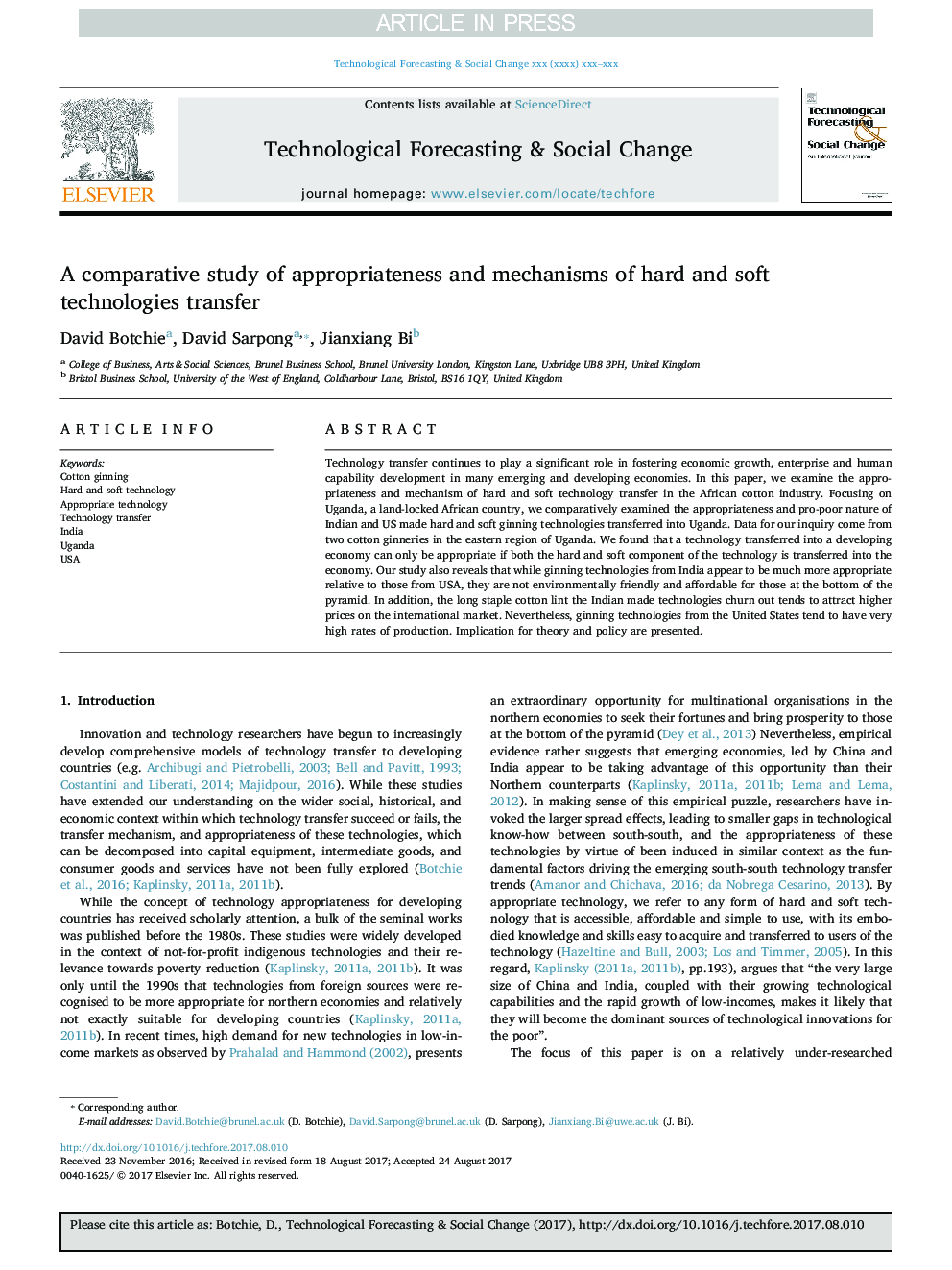| Article ID | Journal | Published Year | Pages | File Type |
|---|---|---|---|---|
| 7255390 | Technological Forecasting and Social Change | 2018 | 13 Pages |
Abstract
Technology transfer continues to play a significant role in fostering economic growth, enterprise and human capability development in many emerging and developing economies. In this paper, we examine the appropriateness and mechanism of hard and soft technology transfer in the African cotton industry. Focusing on Uganda, a land-locked African country, we comparatively examined the appropriateness and pro-poor nature of Indian and US made hard and soft ginning technologies transferred into Uganda. Data for our inquiry come from two cotton ginneries in the eastern region of Uganda. We found that a technology transferred into a developing economy can only be appropriate if both the hard and soft component of the technology is transferred into the economy. Our study also reveals that while ginning technologies from India appear to be much more appropriate relative to those from USA, they are not environmentally friendly and affordable for those at the bottom of the pyramid. In addition, the long staple cotton lint the Indian made technologies churn out tends to attract higher prices on the international market. Nevertheless, ginning technologies from the United States tend to have very high rates of production. Implication for theory and policy are presented.
Related Topics
Social Sciences and Humanities
Business, Management and Accounting
Business and International Management
Authors
David Botchie, David Sarpong, Jianxiang Bi,
